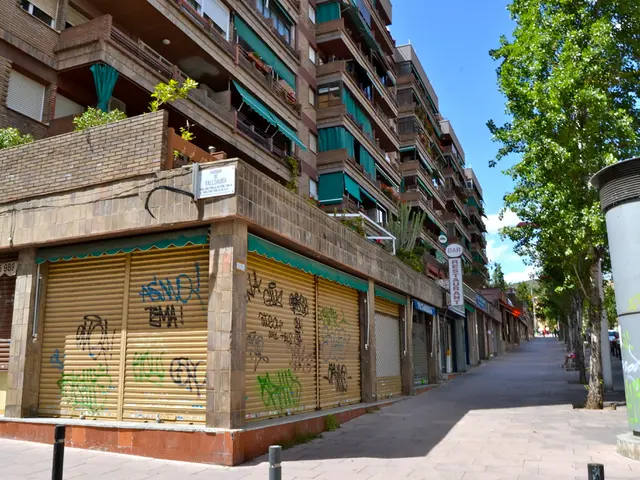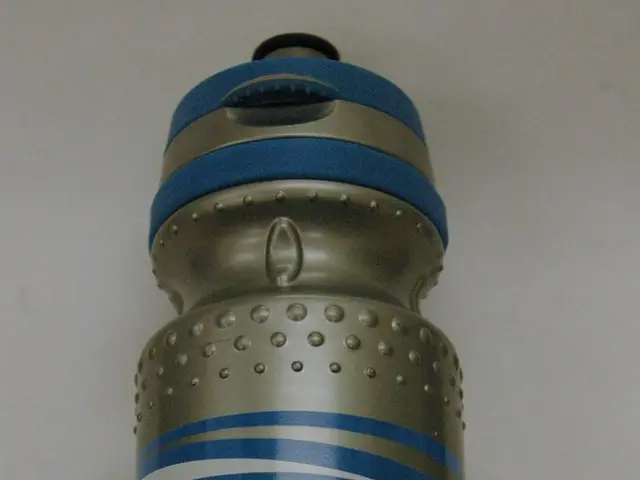Anticipation Prevails: Exploring the Impact of Tariffs on the Design Sector
The ripple effects of recently implemented and proposed US tariffs on home goods and furniture are causing a stir among American designers and international manufacturers. While the reactions vary from one corner of the globe to another, it's clear that uncertainty is the common denominator.
For example, interior designers sourcing high-end home goods are bewildered about what is now taxed, when, and at which stage of the process. Designers navigating international production pipelines are grappling with raw material markups and reconsidering where and how their products are manufactured. Even European firms serving a U.S. clientele are experiencing this tension, with some already adjusting pricing or strategy to remain competitive.
This spring, notices began surfacing in showrooms and studios: a surcharge would now be added to orders, ostensibly to offset tariffs, though the details were often vague. In April, logistics companies like DHL temporarily halted shipments over $800 from Europe to the US, citing compliance complexities. On May 12, a 90-day tariff reduction between the US and China was instituted, lowering general import tariffs from 125 to 30% and the tariff on packages under $800 from 120 to 52%.
Though the actual rates and timelines remain fluid, the prevailing mood is one of pause. Designers are waiting to place orders, to communicate pricing changes, and to determine how - if at all - American manufacturing might respond. Some brands are quietly scaling back their U.S. presence, while others are deliberating whether or not to add line-item surcharges. Many are still trying to understand where, exactly, the extra money is going.
We turned to six voices across the design world - spanning California to Stockholm to Paris - to shed light on how they're coping with the upheaval. Here's what they had to say, in their own words.
Cédric Morisset, CEO, Pierre Yovanovitch Group (Paris, France)
On luxury markets and lasting uncertainty:
'Financially, the 10% tariff increase on our goods in the U.S., combined with local sales tax, still often results in a total cost that is lower than the VAT applied to furniture sales in Europe. So while there is an impact, it is not as significant as one might expect.
This is especially true in the high-end market, where our furniture - anchored in unique craftsmanship and specialized savoir-faire - cannot simply be replicated elsewhere.
The greater impact lies in the confusion and uncertainty these changes create. This atmosphere can delay purchasing decisions, cause stock market fluctuations, stall large-scale projects, and shake client confidence. More importantly, it undermines the spirit of collaboration that drives our work.'
Roman Alonso, Cofounder, Commune Design (Los Angeles, California)
On local loyalty and keeping clients calm:
'Most of our vendors have guaranteed existing quotes and estimates, and everyone is waiting to see what happens after the three-month hiatus.
We always try to keep things as local as possible and always look for craftspeople in the area to support our [interior design] projects. From the start, Commune has been a proponent and supporter of American, specifically California, arts and crafts.
Of course, our clients are concerned and have been asking a lot of questions. We're trying to stay on top of the news, although it's not easy with constant changes happening. The tariff situation just gives us more reason to continue to operate the way we always have.'
Petrus Palmér, Founder, Hem (Stockholm, Sweden)
On preparation and a global approach:
'We've built Hem to be globally resilient. With warehouses in both Europe and the U.S. where we proactively stocked up, we've been able to cushion the impact of recent and proposed tariffs.
From day one, we've kept our trade partners in the loop, offering clear communication and minimizing surprises. The large majority of our products are made in Europe, which has helped us maintain stability in both pricing and lead times, despite global uncertainty.
Tariffs haven't changed our belief in international collaboration – they've only reinforced the need for agile, transparent operations. Great design knows no borders, and we'll keep building a business that reflects that.'
Lee Anne Blake, CEO, The Expert (Los Angeles, California)
On domestic insulation and transparency with clients:
'Initially, we observed a wave of concern across the industry. The conversation quickly shifted to strategic decisions – whether to add surcharges, raise prices outright, or temporarily pause certain international products.
With the recent 90-day tariff pauses, we're seeing a more measured approach as businesses wait to assess long-term implications. This has actually highlighted one of our strengths: approximately 80% of our brand partners and products are American-made, and our curated vintage collection is already stocked stateside and ready to ship, insulating much of our offering from these challenges.
The design community has been remarkably resilient, having already weathered significant supply chain disruptions during the pandemic. Rather than panic, we're observing designers taking a strategic approach – reconsidering their billing structures to account for potential tariff costs and becoming more intentional about domestic sourcing. The situation has prompted meaningful conversations about transparency with clients regarding potential delays or cost increases.'
Conor Taylor, Director, Foresso (Birmingham, England)
On systemic instability and emerging opportunities:
'The tariffs have been incredibly difficult for small businesses like ours. Larger companies may be able to slowly absorb the cost increases and stretch out their price hikes to avoid scaring customers, but for independents, there's no buffer – every shift hits hard and fast.
What's just as damaging as the tariffs themselves is the uncertainty they create. I've had conversations with other business owners who are already scaling back their presence in the U.S., redirecting budgets, and pulling out of trade fairs. I've heard of 10-25% cuts to sales and marketing budgets, simply because people no longer feel confident investing in a market that feels unpredictable.
But disruption can also open up opportunities. I've been approached by several manufacturers looking to establish new partnerships to replace lost U.S. trade. There's a real appetite for connection and collaboration.
That said, supply chains in our industry – especially around materials for design and architecture – can't just be relocated at will. Even if you invested tens or hundreds of millions of dollars in moving production, the maintenance parts and core materials would still need to come from abroad. And that's before considering the cost of labor. For larger-scale, long-term projects, the uncertainty is even more destabilizing – I've heard of cases where tariff rules have changed mid-transit, creating chaos and delays that ripple right through the build timeline.'
Charles de Lisle, Designer (San Francisco, California)
On unclear surcharges and future endeavors:
'There's this wild card that's been placed in our system that we don't know how to manage yet. Tariffs are showing up on purchase orders – 5% here, 15% there – but no one can explain what the percentage is based on. We've received invoices where a $580 tariff charge is listed with no breakdown.
A goal of ours this year was to manufacture lighting at quantity. Every single component – porcelain sockets, switches, plugs – comes from China. There are no U.S. manufacturers. The idea that American factories will step in isn't realistic unless there's real innovation. Otherwise, I think we'll just see prices go up and stay up, like they did after the pandemic.
Because our idea is to start small and make really beautiful things, hopefully it will be okay. My concern is that if we do want to scale, it's going to be challenging to figure out.'
- Industry experts are expressing concerns about the confusion and uncertainty caused by the recent US tariffs on home goods and furniture, as it may delay purchasing decisions, cause stock market fluctuations, stall large-scale projects, and shake client confidence.
- Cédric Morisset, CEO of Pierre Yovanovitch Group, stated that while the 10% tariff increase on their goods in the US has an impact, it is not as significant as one might expect, especially in the high-end market, due to unique craftsmanship and specialized savoir-faire that cannot be replicated elsewhere.
- Roman Alonso, Cofounder of Commune Design, shared that they are trying to stay on top of the news and keep operations local to support American arts and crafts, as most vendors have guaranteed existing quotes and estimates, with everyone waiting to see what happens after the three-month hiatus.
- Petrus Palmaré, Founder of Hem, expressed that the company has proactively stocked up on products and maintained stability in both pricing and lead times, despite global uncertainty, due to warehouses in both Europe and the US and the fact that most of their products are made in Europe.
- Conor Taylor, Director of Foresso, outlined the challenges faced by small businesses due to the tariffs, particularly the difficulty for independents to absorb cost increases, and the potential for disruption to create opportunities for new partnerships in the design and architecture industries.






